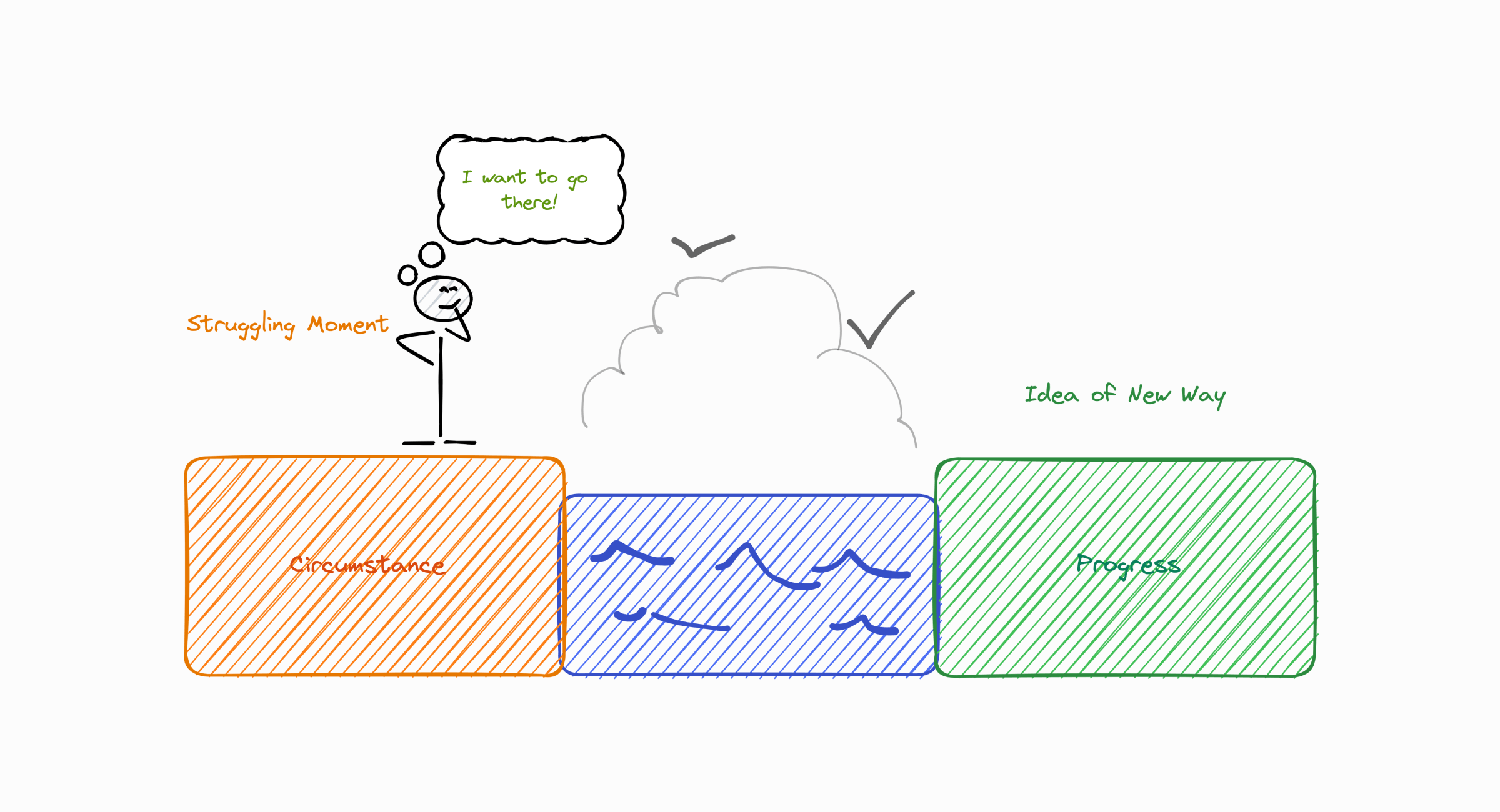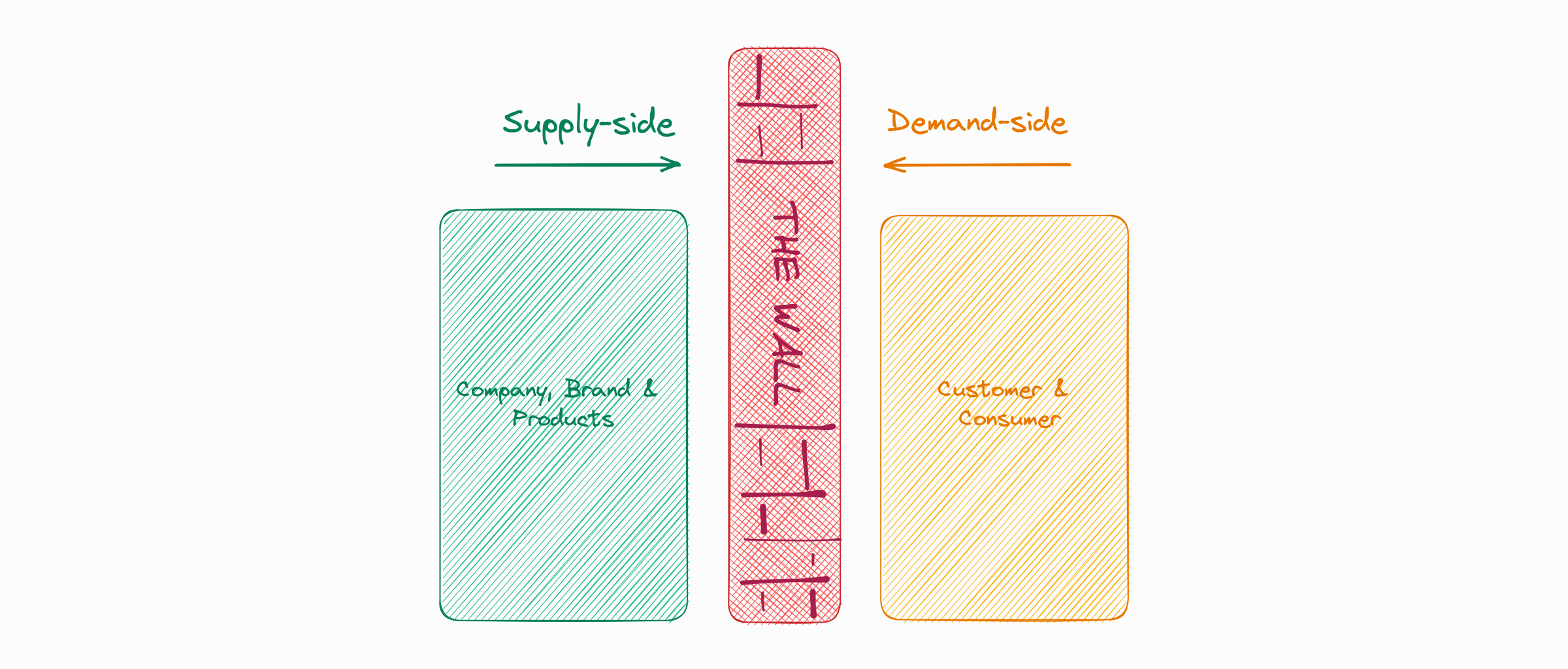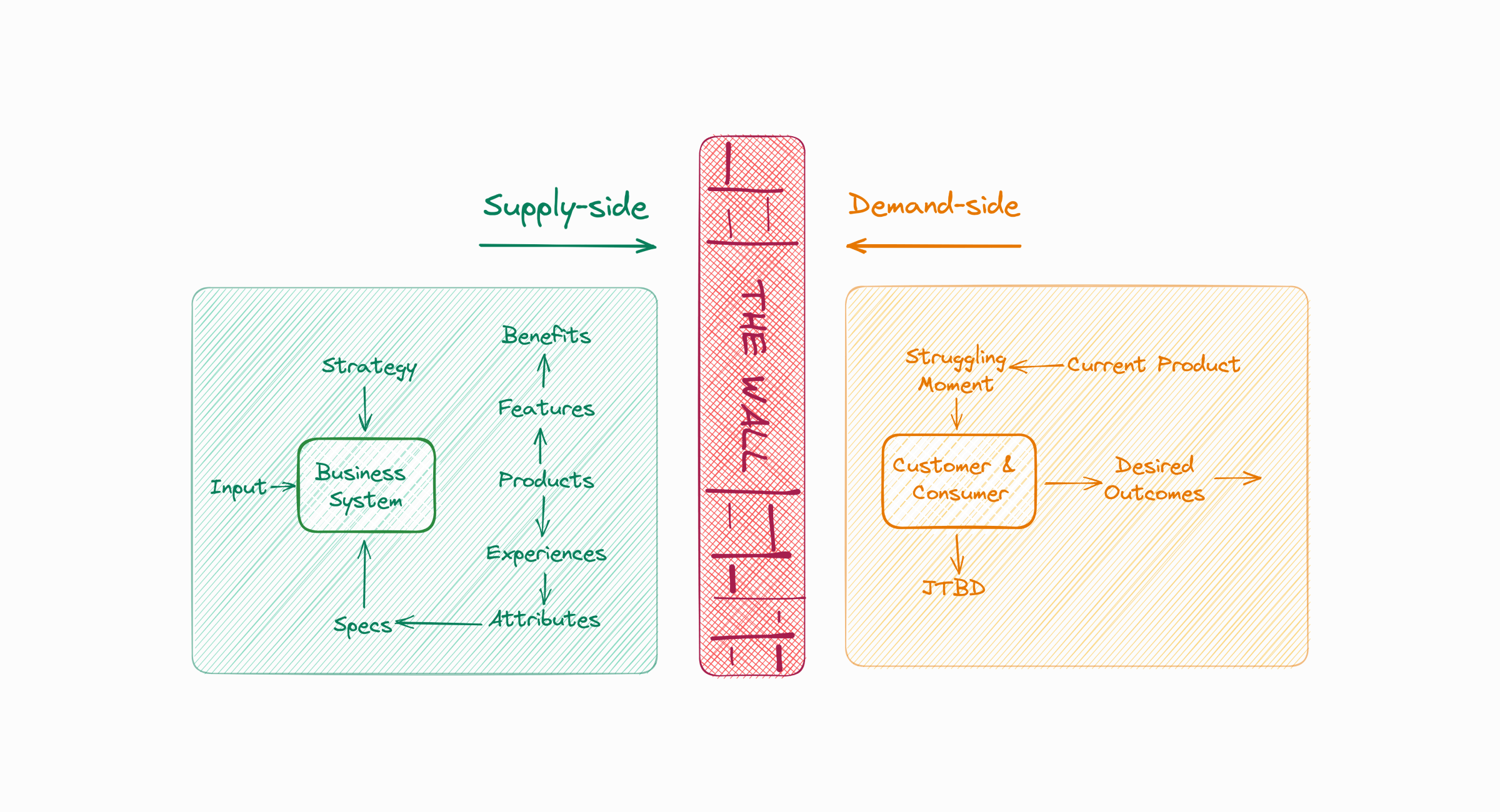
Notes on Unpacking Demand from Bob Moesta
Good innovators and entrepreneurs recognize that they don't create demand; it exists within people, not in the product.
At the core of this concept is that people don't buy products; they hire them to do a job in their life. We are creatures of habit, and we will continue to do the same thing until we experience a struggle, which creates the opportunity to consider something different.
It is important to understand the context and the desired outcome. If you only listen to people's problems without understanding their desired outcome, you won't know what to do.
To gain insight, consider the circumstances and the desired result.

How many ways are there to cross the river? There are a thousand. I could dig a tunnel, construct a bridge, acquire a boat, or teach them to swim. Ultimately, it is the context and desired outcome that dictate which option to pursue, not the technology.
The key distinction to be made is between the supply side and the demand side. As engineers, we were often misled to believe that if we build it, customers will come. Unfortunately, that wasn't the case.
The supply side focuses on what can be done, whereas the demand side is what drives people to use a product or service.
A massive brick wall, 10 feet thick and 100 feet high, stands between the two sides, distorting everything.


As we attempt to persuade people to think and speak in terms of supply-side language--"what do people want?" and "when do they want a new mattress?"- most of the time they just want to sleep.
The greatest competitor to buying a new mattress is often a bottle of NyQuil.
You're not just creating features to deliver news; you're striving to comprehend the progress customers aim to achieve in their lives. This is where a well-executed plan is far better than a half-hearted one. You must take the time to understand the demand side of the world.